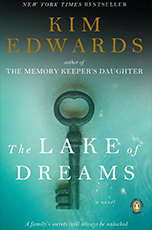
Benedict Cumberbatch (left) and Martin Freeman (right) play Sherlock Holmes and Dr. Watson in modern day interpretation "Sherlock".
Sir Arthur Conan Doyle’s archetypal detective Sherlock Holmes has been portrayed countless time on the small and big screen, most notably by Basil Rathbone and Jeremy Brett. But the new television series with a minimalist title, Sherlock, trades in the lace curtains of Victorian drawing rooms for the gritty streets of modern day London and puts a 21st Century spin on the beloved character. “It seemed to somehow make it a bit less reverent and a bit more fun,” show co-creator Steven Moffat tells NPR. “Much as we love Sherlock Holmes, we love Victoriana. Many of the adaptations become about the period as opposed to about the story.” The BBC show, which has been building quite a buzz in Britain, will begin airing in the U.S. on PBS’s Masterpiece on Sunday, October 24. Read more…

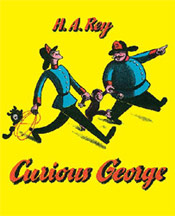
First edition cover, 1941
In a column posted on the American Libraries Magazine website earlier this month, Jennifer Burek Pierce argues that children’s books, like the ever popular Curious George series, should garner more literary merit. “To represent the world for children involves skillful choices based on training, research, and lived experience.” Often times the simple words and captivating imagery of a 32-page picture book impart important life lessons or cultural themes. Such is the case with Curious George, the creation of husband and wife Margret and H. A. Rey. As German Jews, the couple was forced to flee France in 1940 as the Nazi army rolled toward Paris. They escaped on bicycles, and carried among their few belongings several manuscripts of children’s books, one of which featured a mischievous monkey named Fifi. Read more…

Categories: Children's Book, Classic, Fiction, News Tags: Allan Drummond, Curious George, Curious George Saves the Day, H. A. Rey, history, Louise Borden, Margret Rey, The Journey That Saved Curious George, World War II
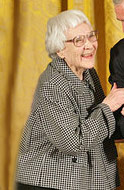
Harper Lee received the Presidential Medal of Freedom on Nov. 5, 2007.
Britain’s Mail on Sunday got a much sought after exclusive recently when friends of reclusive author Harper Lee agreed to facilitate an introduction for reporter Sharon Churcher. As was mentioned in our post last week about the 50th anniversary of Lee’s singular masterpiece, To Kill a Mockingbird, the novelist’s aversion to interviews, or any form of publicity, is a very well known part of her mystique. Mail on Sunday‘s access to the author is quite a win, though it came with a very big caveat: “Don’t mention the Mockingbird“. Churcher traveled to Lee’s hometown of Monroeville, AL for the interview, and although the author only graced her with a handful of short sentences, it was still a very memorable meeting:
“Nervously, I approach the novelist, carrying the best box of chocolates I could find in the small Alabama town of Monroeville, a Hershey’s selection costing a few dollars. I start to apologise that I hadn’t brought more but a beaming Nelle – as her friends and family call her – extends her hand.
Read more…

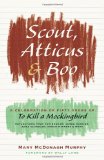 This year marks the 50th anniversary of Harper Lee’s Pulitzer Prize winning book To Kill a Mockingbird. To commemorate the milestone, Mary McDonagh Murphy has written Scout, Atticus & Boo: A Celebration of Fifty Years of To Kill a Mockingbird (Harper, 240pgs) in which twenty-six people are interviewed about their love of the book. Some of the interviewees are very well known, such as Oprah Winfrey, Anna Quindlen and Tom Brokaw, others like the author’s sister, Alice Finch Lee are less so. After 50 years in print, the novel is considered an American classic and still sells almost one million copies a year. “No other twentieth-century American novel is more widely read. Even British librarians, who were polled in 2006 and asked, “Which book should every adult read before they die?” voted To Kill a Mockingbird number one. The Bible was number two,” writes Murphy in an excerpt published on the The New Yorker‘s website. Murphy, who is also a filmmaker, has produced a documentary titled Hey, Boo to coincide with the book.
This year marks the 50th anniversary of Harper Lee’s Pulitzer Prize winning book To Kill a Mockingbird. To commemorate the milestone, Mary McDonagh Murphy has written Scout, Atticus & Boo: A Celebration of Fifty Years of To Kill a Mockingbird (Harper, 240pgs) in which twenty-six people are interviewed about their love of the book. Some of the interviewees are very well known, such as Oprah Winfrey, Anna Quindlen and Tom Brokaw, others like the author’s sister, Alice Finch Lee are less so. After 50 years in print, the novel is considered an American classic and still sells almost one million copies a year. “No other twentieth-century American novel is more widely read. Even British librarians, who were polled in 2006 and asked, “Which book should every adult read before they die?” voted To Kill a Mockingbird number one. The Bible was number two,” writes Murphy in an excerpt published on the The New Yorker‘s website. Murphy, who is also a filmmaker, has produced a documentary titled Hey, Boo to coincide with the book.
Read more…

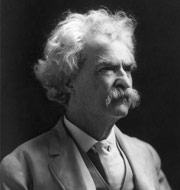 Today marks the centennial anniversary of the death of celebrated American author Mark Twain. The people and themes that Twain wrote about still strike a chord with modern audiences, as Huckleberry Finn and Tom Sawyer remain among the world’s most beloved literary characters. Also a testament to his enduring popularity, is the fact that many of his books are still in print. In an interview with USA Today, author Wally Lamb (I Know This Much Is True) calls Twain “America’s most influential writer.” Lamb believes “Huck Finn‘s young narrator…is a prototype for J.D. Salinger’s The Catcher in the Rye and Harper Lee’s To Kill a Mockingbird.” Scholars and writers continue to be fascinated with Twain’s novels, as well as the rocky events of his real life. Several new books analyzing the author’s life and work are slated to be released this year, including Mark Twain: The Adventures of Samuel L. Clemens by Texas A&M professor Jerome Loving (University of California Press, 491pgs) and The Mark Twain Anthology: Great Writers on His Life and Works edited by Shelley Fisher Fishkin (Library of America, 492pgs). Additionally, several new editions of his books will are schedule to be published this year in Portuguese, French, and Japanese.
Today marks the centennial anniversary of the death of celebrated American author Mark Twain. The people and themes that Twain wrote about still strike a chord with modern audiences, as Huckleberry Finn and Tom Sawyer remain among the world’s most beloved literary characters. Also a testament to his enduring popularity, is the fact that many of his books are still in print. In an interview with USA Today, author Wally Lamb (I Know This Much Is True) calls Twain “America’s most influential writer.” Lamb believes “Huck Finn‘s young narrator…is a prototype for J.D. Salinger’s The Catcher in the Rye and Harper Lee’s To Kill a Mockingbird.” Scholars and writers continue to be fascinated with Twain’s novels, as well as the rocky events of his real life. Several new books analyzing the author’s life and work are slated to be released this year, including Mark Twain: The Adventures of Samuel L. Clemens by Texas A&M professor Jerome Loving (University of California Press, 491pgs) and The Mark Twain Anthology: Great Writers on His Life and Works edited by Shelley Fisher Fishkin (Library of America, 492pgs). Additionally, several new editions of his books will are schedule to be published this year in Portuguese, French, and Japanese.
Read more…

Categories: Classic, Fiction, New Release Tags: Huckleberry Finn, Jerome Loving, Mark Twain, Mark Twain: The Adventures of Samuel L. Clemens, Samuel Clemens, Shelley Fisher Fishkin, The Mark Twain Anthology: Great Writers on His Life and Works, The Mark Twain House & Museum, Tom Sawyer, Wally Lamb
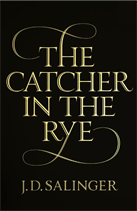
New cover design by UK publisher Hamish Hamilton.
Beloved, yet reclusive, author J.D. Salinger passed away on Wednesday at the age of 91. Though he had not published new material or made public appearances in decades, he was still considered an icon of American literature. Salinger published just four books between the years of 1951 and 1963: The Catcher in the Rye, Nine Stories, Franny and Zooey and Raise High the Roof Beam, Carpenters and Seymour: An Introduction, and published his last short story in 1965. His first (and only) full length novel, The Catcher in the Rye, shot him to fame and forced him into the limelight he would soon come to abhor. With 16-year-old Holden Caulfield’s angry and honest narration, The Catcher in the Rye, stuck a chord with young people around the world, and inspired generations. The Guardian credits him with “inventing the 20th-century teenager”.
Read more…

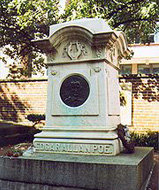 For more than half a century, a mysterious visitor would make an annual pilgrimage to Edgar Allan Poe’s grave site to leave three roses and a bottle of cognac to mark the anniversary of the author’s birth. The Seattle Times reports that for the first time in six decades, the illusive mourner failed to show on January 19 of this year. This unexpected absence has left many wondering if the stranger in the black hat and white scarf has met an untimely end, and if he’ll ever return. “I’m confused, befuddled,” said Jeff Jerome, curator of the Poe House and Museum. “I don’t know what’s going on.” The first written reference to the visitor was published in a 1949 issue of The Evening Sun of Baltimore. Since then the mysterious mourner has developed a following of his own, with Jerome and many other Poe enthusiasts staking out Westminster Hall and Burying Ground, to watch the dark figure leave his gifts at Poe’s grave stone each year.
For more than half a century, a mysterious visitor would make an annual pilgrimage to Edgar Allan Poe’s grave site to leave three roses and a bottle of cognac to mark the anniversary of the author’s birth. The Seattle Times reports that for the first time in six decades, the illusive mourner failed to show on January 19 of this year. This unexpected absence has left many wondering if the stranger in the black hat and white scarf has met an untimely end, and if he’ll ever return. “I’m confused, befuddled,” said Jeff Jerome, curator of the Poe House and Museum. “I don’t know what’s going on.” The first written reference to the visitor was published in a 1949 issue of The Evening Sun of Baltimore. Since then the mysterious mourner has developed a following of his own, with Jerome and many other Poe enthusiasts staking out Westminster Hall and Burying Ground, to watch the dark figure leave his gifts at Poe’s grave stone each year.
Read more…

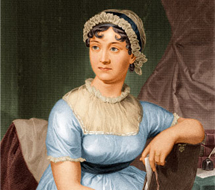 Nearly 200 years after her death, Jane Austen remains one of the world’s best-loved authors. Much has been written about her work and life, and for decades it was widely accepted that she died from Addison’s disease, a rare disorder in which the adrenal gland does not produce enough hormones. However, CNN reports that social scientist Katherine White disputes the diagnosis and theorizes that Austen died of tuberculosis. An article for the British Medical Journal published in 1964, was the first to suggest Austen had Addison’s disease. White, who also suffers from the disease, recently read the article and felt the author’s symptoms did not add up. Sufferers often experience painful headaches and verbal difficulties. But in a letter to a friend written just two months before hear death, Austen states: “My head was always clear, and I had scarcely any pain.” Though this is only anectodal evidence from two centuries ago, endocrinology expert Kenneth Burman agrees there is some merit to White’s theory, due to the wide spread of tuberculosis during the author’s lifetime. Though he warns: “Retrospective diagnosis is very speculative. It’s unknowable with certainty.”
Nearly 200 years after her death, Jane Austen remains one of the world’s best-loved authors. Much has been written about her work and life, and for decades it was widely accepted that she died from Addison’s disease, a rare disorder in which the adrenal gland does not produce enough hormones. However, CNN reports that social scientist Katherine White disputes the diagnosis and theorizes that Austen died of tuberculosis. An article for the British Medical Journal published in 1964, was the first to suggest Austen had Addison’s disease. White, who also suffers from the disease, recently read the article and felt the author’s symptoms did not add up. Sufferers often experience painful headaches and verbal difficulties. But in a letter to a friend written just two months before hear death, Austen states: “My head was always clear, and I had scarcely any pain.” Though this is only anectodal evidence from two centuries ago, endocrinology expert Kenneth Burman agrees there is some merit to White’s theory, due to the wide spread of tuberculosis during the author’s lifetime. Though he warns: “Retrospective diagnosis is very speculative. It’s unknowable with certainty.”
Read more…

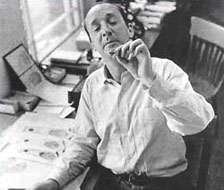 Vladimir Nabokov’s last work has finally been published by his son, Dmitri, and the book received a cool reception from some corners of the literary world. Nabokov was working on The Original of Laura just prior to his death in 1977, and though some regard its publishing as an unearthing of a literary treasure, others feel it is a violation of a dying man’s last wish. Before his passing, the author requested that his wife, Vera, burn the collection of 138 index cards that held all his notes for the book. After his death, Vera could not bear to destroy the work, and stored the cards in a Swiss bank vault. This was not the first time she had prevented Nabokov’s work from being destroyed; she previously stopped him from burning the manuscript of his seminal work Lolita. The notes remained locked away for decades, even after Vera’s death in 1991, until their son, Dmitri, recently decided to publish them. Further eyebrows were raised when, Dmitri, released a 5,000-word excerpt to Playboy magazine, though he defended his choice by explaining his father’s fondness for the publication’s cartoons.
Vladimir Nabokov’s last work has finally been published by his son, Dmitri, and the book received a cool reception from some corners of the literary world. Nabokov was working on The Original of Laura just prior to his death in 1977, and though some regard its publishing as an unearthing of a literary treasure, others feel it is a violation of a dying man’s last wish. Before his passing, the author requested that his wife, Vera, burn the collection of 138 index cards that held all his notes for the book. After his death, Vera could not bear to destroy the work, and stored the cards in a Swiss bank vault. This was not the first time she had prevented Nabokov’s work from being destroyed; she previously stopped him from burning the manuscript of his seminal work Lolita. The notes remained locked away for decades, even after Vera’s death in 1991, until their son, Dmitri, recently decided to publish them. Further eyebrows were raised when, Dmitri, released a 5,000-word excerpt to Playboy magazine, though he defended his choice by explaining his father’s fondness for the publication’s cartoons.
Read more…

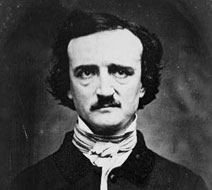 Apparently, the Heene family has cribbed a page from Edgar Allan Poe. Though the family recently created a media circus with the false claim that their son had floated away in a helium balloon, the idea of a balloon hoax is not original. According to The Guardian, the April 13, 1844 issue of the New York Sun reported an exclusive account of the balloon “Victoria” crossing the Atlantic Ocean in just 75 hours. The newspaper published excerpts from the diary of the balloon’s navigators, and the story culminated with their “sighting” near the South Carolina coast. But, the entire account was revealed as a hoax a couple days later, with Edgar Allan Poe named as the perpetrator. (A real balloon would not make the transatlantic trip until 1919, when the British dirigible R-34 arrived in New York after a 108 hour voyage.) Always the master storyteller, Poe loved a good hoax, and the balloon story was just one of five hoaxes that he contrived through out his life. Like the Heenes, he was thrilled at all the public attention surrounding his fabrication: “. . . I never witnessed more intense excitement to get possession of a newspaper.” Poe beat the Heenes to the punch by 165 years, though it seems unlikely that the family knew about the original hoax. At least no one has cause to call child protective services on Poe.
Apparently, the Heene family has cribbed a page from Edgar Allan Poe. Though the family recently created a media circus with the false claim that their son had floated away in a helium balloon, the idea of a balloon hoax is not original. According to The Guardian, the April 13, 1844 issue of the New York Sun reported an exclusive account of the balloon “Victoria” crossing the Atlantic Ocean in just 75 hours. The newspaper published excerpts from the diary of the balloon’s navigators, and the story culminated with their “sighting” near the South Carolina coast. But, the entire account was revealed as a hoax a couple days later, with Edgar Allan Poe named as the perpetrator. (A real balloon would not make the transatlantic trip until 1919, when the British dirigible R-34 arrived in New York after a 108 hour voyage.) Always the master storyteller, Poe loved a good hoax, and the balloon story was just one of five hoaxes that he contrived through out his life. Like the Heenes, he was thrilled at all the public attention surrounding his fabrication: “. . . I never witnessed more intense excitement to get possession of a newspaper.” Poe beat the Heenes to the punch by 165 years, though it seems unlikely that the family knew about the original hoax. At least no one has cause to call child protective services on Poe.
Read more…






 Today marks the centennial anniversary of the death of celebrated American author Mark Twain. The people and themes that Twain wrote about still strike a chord with modern audiences, as Huckleberry Finn and Tom Sawyer remain among the world’s most beloved literary characters. Also a testament to his enduring popularity, is the fact that many of his books are still in print. In an interview with USA Today, author Wally Lamb (I Know This Much Is True) calls Twain “America’s most influential writer.” Lamb believes “Huck Finn‘s young narrator…is a prototype for J.D. Salinger’s The Catcher in the Rye and Harper Lee’s To Kill a Mockingbird.” Scholars and writers continue to be fascinated with Twain’s novels, as well as the rocky events of his real life. Several new books analyzing the author’s life and work are slated to be released this year, including Mark Twain: The Adventures of Samuel L. Clemens by Texas A&M professor Jerome Loving (University of California Press, 491pgs) and The Mark Twain Anthology: Great Writers on His Life and Works edited by Shelley Fisher Fishkin (Library of America, 492pgs). Additionally, several new editions of his books will are schedule to be published this year in Portuguese, French, and Japanese.
Today marks the centennial anniversary of the death of celebrated American author Mark Twain. The people and themes that Twain wrote about still strike a chord with modern audiences, as Huckleberry Finn and Tom Sawyer remain among the world’s most beloved literary characters. Also a testament to his enduring popularity, is the fact that many of his books are still in print. In an interview with USA Today, author Wally Lamb (I Know This Much Is True) calls Twain “America’s most influential writer.” Lamb believes “Huck Finn‘s young narrator…is a prototype for J.D. Salinger’s The Catcher in the Rye and Harper Lee’s To Kill a Mockingbird.” Scholars and writers continue to be fascinated with Twain’s novels, as well as the rocky events of his real life. Several new books analyzing the author’s life and work are slated to be released this year, including Mark Twain: The Adventures of Samuel L. Clemens by Texas A&M professor Jerome Loving (University of California Press, 491pgs) and The Mark Twain Anthology: Great Writers on His Life and Works edited by Shelley Fisher Fishkin (Library of America, 492pgs). Additionally, several new editions of his books will are schedule to be published this year in Portuguese, French, and Japanese.
 For more than half a century, a mysterious visitor would make an annual pilgrimage to Edgar Allan Poe’s grave site to leave three roses and a bottle of cognac to mark the anniversary of the author’s birth. The Seattle Times reports that for the first time in six decades, the illusive mourner failed to show on January 19 of this year. This unexpected absence has left many wondering if the stranger in the black hat and white scarf has met an untimely end, and if he’ll ever return. “I’m confused, befuddled,” said Jeff Jerome, curator of the Poe House and Museum. “I don’t know what’s going on.” The first written reference to the visitor was published in a 1949 issue of The Evening Sun of Baltimore. Since then the mysterious mourner has developed a following of his own, with Jerome and many other Poe enthusiasts staking out Westminster Hall and Burying Ground, to watch the dark figure leave his gifts at Poe’s grave stone each year.
For more than half a century, a mysterious visitor would make an annual pilgrimage to Edgar Allan Poe’s grave site to leave three roses and a bottle of cognac to mark the anniversary of the author’s birth. The Seattle Times reports that for the first time in six decades, the illusive mourner failed to show on January 19 of this year. This unexpected absence has left many wondering if the stranger in the black hat and white scarf has met an untimely end, and if he’ll ever return. “I’m confused, befuddled,” said Jeff Jerome, curator of the Poe House and Museum. “I don’t know what’s going on.” The first written reference to the visitor was published in a 1949 issue of The Evening Sun of Baltimore. Since then the mysterious mourner has developed a following of his own, with Jerome and many other Poe enthusiasts staking out Westminster Hall and Burying Ground, to watch the dark figure leave his gifts at Poe’s grave stone each year. Nearly 200 years after her death, Jane Austen remains one of the world’s best-loved authors. Much has been written about her work and life, and for decades it was widely accepted that she died from Addison’s disease, a rare disorder in which the adrenal gland does not produce enough hormones. However, CNN reports that social scientist Katherine White disputes the diagnosis and theorizes that Austen died of tuberculosis. An article for the British Medical Journal published in 1964, was the first to suggest Austen had Addison’s disease. White, who also suffers from the disease, recently read the article and felt the author’s symptoms did not add up. Sufferers often experience painful headaches and verbal difficulties. But in a letter to a friend written just two months before hear death, Austen states: “My head was always clear, and I had scarcely any pain.” Though this is only anectodal evidence from two centuries ago, endocrinology expert Kenneth Burman agrees there is some merit to White’s theory, due to the wide spread of tuberculosis during the author’s lifetime. Though he warns: “Retrospective diagnosis is very speculative. It’s unknowable with certainty.”
Nearly 200 years after her death, Jane Austen remains one of the world’s best-loved authors. Much has been written about her work and life, and for decades it was widely accepted that she died from Addison’s disease, a rare disorder in which the adrenal gland does not produce enough hormones. However, CNN reports that social scientist Katherine White disputes the diagnosis and theorizes that Austen died of tuberculosis. An article for the British Medical Journal published in 1964, was the first to suggest Austen had Addison’s disease. White, who also suffers from the disease, recently read the article and felt the author’s symptoms did not add up. Sufferers often experience painful headaches and verbal difficulties. But in a letter to a friend written just two months before hear death, Austen states: “My head was always clear, and I had scarcely any pain.” Though this is only anectodal evidence from two centuries ago, endocrinology expert Kenneth Burman agrees there is some merit to White’s theory, due to the wide spread of tuberculosis during the author’s lifetime. Though he warns: “Retrospective diagnosis is very speculative. It’s unknowable with certainty.” Vladimir Nabokov’s last work has finally been published by his son, Dmitri, and the book received a cool reception from some corners of the literary world. Nabokov was working on The Original of Laura just prior to his death in 1977, and though some regard its publishing as an unearthing of a literary treasure, others feel it is a violation of a dying man’s last wish. Before his passing, the author requested that his wife, Vera, burn the collection of 138 index cards that held all his notes for the book. After his death, Vera could not bear to destroy the work, and stored the cards in a Swiss bank vault. This was not the first time she had prevented Nabokov’s work from being destroyed; she previously stopped him from burning the manuscript of his seminal work Lolita. The notes remained locked away for decades, even after Vera’s death in 1991, until their son, Dmitri, recently decided to publish them. Further eyebrows were raised when, Dmitri, released a 5,000-word excerpt to Playboy magazine, though he defended his choice by explaining his father’s fondness for the publication’s cartoons.
Vladimir Nabokov’s last work has finally been published by his son, Dmitri, and the book received a cool reception from some corners of the literary world. Nabokov was working on The Original of Laura just prior to his death in 1977, and though some regard its publishing as an unearthing of a literary treasure, others feel it is a violation of a dying man’s last wish. Before his passing, the author requested that his wife, Vera, burn the collection of 138 index cards that held all his notes for the book. After his death, Vera could not bear to destroy the work, and stored the cards in a Swiss bank vault. This was not the first time she had prevented Nabokov’s work from being destroyed; she previously stopped him from burning the manuscript of his seminal work Lolita. The notes remained locked away for decades, even after Vera’s death in 1991, until their son, Dmitri, recently decided to publish them. Further eyebrows were raised when, Dmitri, released a 5,000-word excerpt to Playboy magazine, though he defended his choice by explaining his father’s fondness for the publication’s cartoons. Apparently, the Heene family has cribbed a page from Edgar Allan Poe. Though the family recently created a media circus with the false claim that their son had floated away in a helium balloon, the idea of a balloon hoax is not original. According to The Guardian, the April 13, 1844 issue of the New York Sun reported an exclusive account of the balloon “Victoria” crossing the Atlantic Ocean in just 75 hours. The newspaper published excerpts from the diary of the balloon’s navigators, and the story culminated with their “sighting” near the South Carolina coast. But, the entire account was revealed as a hoax a couple days later, with Edgar Allan Poe named as the perpetrator. (A real balloon would not make the transatlantic trip until 1919, when the British dirigible R-34 arrived in New York after a 108 hour voyage.) Always the master storyteller, Poe loved a good hoax, and the balloon story was just one of five hoaxes that he contrived through out his life. Like the Heenes, he was thrilled at all the public attention surrounding his fabrication: “. . . I never witnessed more intense excitement to get possession of a newspaper.” Poe beat the Heenes to the punch by 165 years, though it seems unlikely that the family knew about the original hoax. At least no one has cause to call child protective services on Poe.
Apparently, the Heene family has cribbed a page from Edgar Allan Poe. Though the family recently created a media circus with the false claim that their son had floated away in a helium balloon, the idea of a balloon hoax is not original. According to The Guardian, the April 13, 1844 issue of the New York Sun reported an exclusive account of the balloon “Victoria” crossing the Atlantic Ocean in just 75 hours. The newspaper published excerpts from the diary of the balloon’s navigators, and the story culminated with their “sighting” near the South Carolina coast. But, the entire account was revealed as a hoax a couple days later, with Edgar Allan Poe named as the perpetrator. (A real balloon would not make the transatlantic trip until 1919, when the British dirigible R-34 arrived in New York after a 108 hour voyage.) Always the master storyteller, Poe loved a good hoax, and the balloon story was just one of five hoaxes that he contrived through out his life. Like the Heenes, he was thrilled at all the public attention surrounding his fabrication: “. . . I never witnessed more intense excitement to get possession of a newspaper.” Poe beat the Heenes to the punch by 165 years, though it seems unlikely that the family knew about the original hoax. At least no one has cause to call child protective services on Poe.